#NASA’s Bennu Asteroid Sample
Text

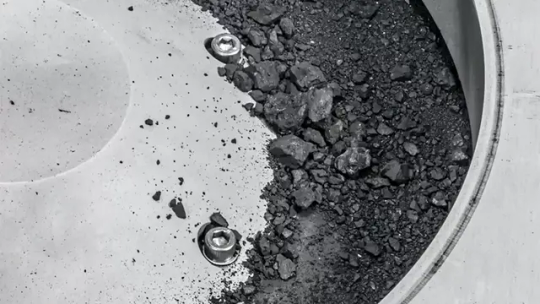
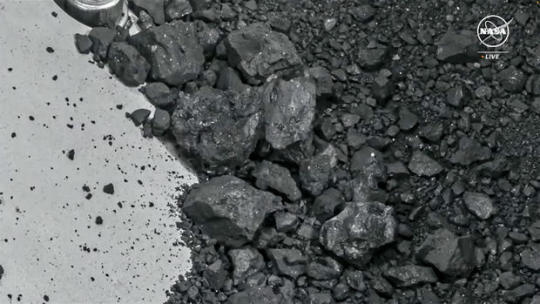
NASA’s Bennu Asteroid Sample
More carbon than expected and an abundance of water were found in the 4.5-billion-year-old asteroid sample returned to Earth by OSIRIS-REx. The two combined could mean that the building blocks for life on Earth might be locked in these rocks.
#NASA’s Bennu Asteroid Sample#OSIRIS-REx#nasa#nasa photos#nasa picture of the day#space#spaceship#spacecraft#solar system
77 notes
·
View notes
Text
youtube
We're going to get a physical sample of an asteroid returned to the Earth this Sunday, September 24, 2023.
#osiris-rex#asteroid#asteroid bennu#sample return#tagsam#nasa#astronomy#planetary science#space#space exploration#space probe#september 24#nasa loves their acronyms#need another silly acronym#Youtube
13 notes
·
View notes
Text

"Hi there!"
2 notes
·
View notes
Text
NASA Shares Asteroid Bennu Sample in Exchange with JAXA
As part of an asteroid sample exchange, NASA has transferred to JAXA (Japan Aerospace Exploration Agency) a portion of the asteroid Bennu sample collected by the agency’s OSIRIS-REx mission. The sample was officially handed over by NASA officials during a ceremony on Aug. 22 at JAXA’s Sagamihara, Japan, campus. This asteroid sample transfer follows the […]
from NASA https://ift.tt/oZUhG4W
0 notes
Text
Bennu - I think the most fascinating aspect for me is the finding of water-rich minerals within the sample. As Dr. Dante Lauretta succinctly puts it, "The reason that Earth is a habitable world - that we have oceans and lakes and rivers and rain - is because clay minerals, like the ones we're seeing from Bennu, landed on Earth 4.5 billion years ago."
1 note
·
View note
Text

An article published in the journal "Meteoritics & Planetary Science" reports the results of the preliminary analysis of the samples of material from asteroid Bennu brought back to Earth by NASA's OSIRIS-REx space probe. A team of researchers conducted morphological and chemical analyzes of the samples, finding a lot of carbon and nitrogen together with organic compounds, all very important components for life forms of the Earth's type.
138 notes
·
View notes
Text

Before and After Spacecraft Touchdown on Bennu
Captured on Oct. 20 during the OSIRIS-REx mission’s Touch-And-Go (TAG) sample collection event, this series of 2 images shows the SamCam imager’s field of view at the moment before and after the NASA spacecraft touched down on asteroid Bennu’s surface. The sampling event brought the spacecraft all the way down to sample site Nightingale, and the team on Earth received confirmation of successful touchdown at 6:08 pm EDT. Preliminary data show the sampling head touched Bennu’s surface for approximately 6 seconds, after which the spacecraft performed a back-away burn.
Date Taken: Oct. 20, 2020


#asteroid bennu#bennu#asteroid observations#asteroidbelt#asteroid astrology#asteroids#asteroid#astronomy#nasa#astronomers#universe#astrophotography#nasa photos#astrophysics#outer space#nasawebb#hubble space telescope#astronaut#space exploration#space#science#james webb space telescope#nasa cassi#nasa picture of the day#nasa science#nasaastronaut#nasa jpl#international space station#planetary science#planetary nebula
59 notes
·
View notes
Photo
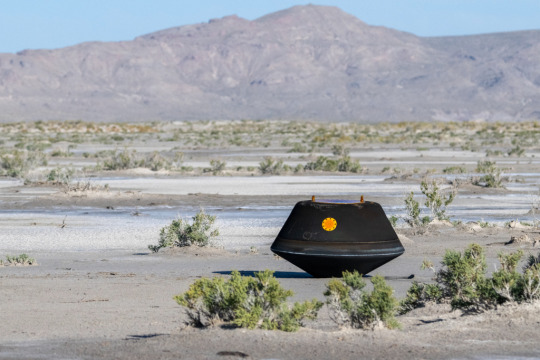
2023 September 29
Back from Bennu
Image Credit: NASA/Keegan Barber
Explanation: Back from asteroid 101955 Bennu, a 110-pound, 31-inch wide sample return capsule rests in a desert on planet Earth in this photo, taken at the Department of Defense Utah Test and Training Range near Salt Lake City last Sunday, September 24. Dropped off by the OSIRIS-Rex spacecraft, the capsule looks charred from the extreme temperatures experienced during its blistering descent through Earth's dense atmosphere. OSIRIS-Rex began its home-ward journey from Bennu in May of 2021. Delivered to NASA’s Johnson Space Center in Houston on September 25, the capsule's canister is expected to contain an uncontaminated sample of about a half pound (250 grams) of Bennu's loosely packed regolith. Working in a new laboratory designed for the OSIRIS-REx mission, scientists and engineers will complete the canister disassembly process, and plan to unveil the sample of the near-Earth asteroid in a broadcast event on October 11.
∞ Source: apod.nasa.gov/apod/ap230929.html
150 notes
·
View notes
Text
It's been over 3.5 months since NASA's OSIRIS-REx spacecraft dropped off its precious sample of asteroid dust, and scientists have finally managed to get the lid off the sample container.
Now, the team can finally complete the steps needed to disassemble the Touch-and-Go Sample Acquisition Mechanism (TAGSAM) container, and access the rocks and dirt collected from asteroid Bennu. Once retrieved, the sample can be divvied up and distributed to science teams around the world.
Continue Reading.
76 notes
·
View notes
Text
Touchdown! Alien Rock Returned from Billions of Miles Away!

After traveling billions of miles to Bennu and back, the OSIRIS-REx spacecraft released its sample capsule toward Earth’s atmosphere at 6:42 a.m. EDT (4:42 a.m. MDT). The spacecraft was 63,000 miles (102,000 kilometers) from Earth’s surface at the time – about one-third the distance from Earth to the Moon.
Traveling at 27,650 mph (44,500 kph), the capsule pierced the atmosphere at 10:42 a.m. EDT (8:42 a.m. MDT), off the coast of California at an altitude of about 83 miles (133 kilometers). Within 10 minutes, it landed on the military range. Along the way, two parachutes successfully deployed to stabilize and slow the capsule down to a gentle 11 mph (18 kph) at touchdown
“The returned samples collected from Bennu will help scientists worldwide make discoveries to better understand planet formation and the origin of organics and water that led to life on Earth, as well as benefit all of humanity by learning more about potentially hazardous asteroids”
After years of anticipation and hard work by NASA’s OSIRIS-REx (Origins, Spectral Interpretation, Resource Identification and Security – Regolith Explorer) team, a capsule of rocks and dust collected from asteroid Bennu finally is on Earth. It landed at 8:52 a.m. MDT (10:52 a.m. EDT) on Sunday, in a targeted area of the Department of Defense’s Utah Test and Training Range near Salt Lake City.
Within an hour and a half, the capsule was transported by helicopter to a temporary clean room set up in a hangar on the training range, where it now is connected to a continuous flow of nitrogen.
Getting the sample under a “nitrogen purge,” as scientists call it, was one of the OSIRIS-REx team’s most critical tasks today. Nitrogen is a gas that doesn’t interact with most other chemicals, and a continuous flow of it into the sample container inside the capsule will keep out earthly contaminants to leave the sample pure for scientific analyses.
76 notes
·
View notes
Text
It’s been hard recently to think about anything other than the wars and humanitarian crises raging around the world. Climate change has left its mark in what was almost certainly the hottest year in human history—there were unprecedented heat waves, intensified forest fires, torrential rain, and floods like those in Libya that caused devastation after two dams burst.
But this has not stopped scientists, innovators, and decisionmakers from working on solutions to our biggest societal challenges—with success. Here is a collection of uplifting news to come out of 2023.
A powerful laser veered lightning strikes off their path
In an instant, millions of volts can damage buildings, spark fires, and harm people—unless the lightning can be redirected. An experiment with a laser beam suggests this is possible. The scientists behind it must now demonstrate that their multimillion-dollar laser would actually work better at critical sites such as airports and rocket launchpads than widely used, cheap lightning rods. Read more at Science.
Asteroid rocks and dust were brought to Earth
The first US mission to collect an asteroid sample, OSIRIS-REx, successfully returned a capsule containing granules and dust from the asteroid Bennu. Early analyses back at NASA’s lab suggest the sample is rich in carbon and water-laden minerals, the building blocks of life on Earth. Read more at WIRED.
Scientists grew mouse embryos for the first time ever in space
What would make humans a truly spacefaring species? If we could reproduce and grow outside of Earth’s atmosphere. It may be that this is possible, an experiment with mice suggests. Scientists managed to grow mouse embryos aboard the International Space Station and return them safely to Earth. Their initial growth appeared to be unaffected by the low gravity and high radiation. Read more at New Scientist.
A rare egg-laying mammal was rediscovered after decades
A species with the spines of a hedgehog, the snout of an anteater, and the feet of a mole seems hard to miss. But the long-beaked echidna Zaglossus attenboroughi—named after British naturalist David Attenborough—had remained hidden until caught on camera for the first time since it was scientifically recorded in 1961. This egg-laying mammal is known to only live in the Cyclops Mountains in the Indonesian province of Papua. Read more at Mongabay.
Countries signed a landmark treaty to protect the high seas
After almost 20 years of negotiations, members of the United Nations agreed to protect marine life in international waters—the two-thirds of the world’s oceans that lie outside of national boundaries. This legal framework enables, for example, the creation of vast marine protected areas (MPAs). It also states that “genetic resources,” such as materials from animals and plants discovered for use in pharmaceuticals or foods, should benefit society as a whole. Read more at The Guardian.
California national park bounces back after wildfire
Two years after California’s largest single wildfire burned almost 70 percent of Lassen Volcanic National Park, the ecosystem remains viable. Shrubs and grasses are growing in burned areas while fungi and insects are decomposing dead tree trunks, leading to a slow recovery. Read more at The Guardian.
Brazil’s top court rules for Indigenous rights in landmark case
A powerful agribusiness lobby tried to place time limits on Indigenous peoples’ right to land. They would have to prove they lived on the land in 1988, when Brazil’s current constitution was ratified. But many Indigenous peoples were expelled from their ancestral lands during the country’s military dictatorship, which lasted from from the 1960s to the 1980s. The Supreme Court in Brazil squashed the proposed time limit for land claims. Read more at AP News.
There could be a large reserve of hydrogen deep beneath the French ground
Hydrogen could power factories, trucks, ships, and airplanes in the future—but producing it requires a lot of energy and is expensive. But the gas also occurs naturally deep in the Earth’s crust, and researchers in France have accidentally stumbled on a potentially large deposit. Next year they plan to begin drilling to collect gas samples from depths of up to 1.8 miles. Read more at the Conversation.
The world may have crossed a solar power tipping point
A new study suggests that solar is on track to become the main source of the world’s energy by 2050—even without more ambitious climate policies being introduced. Renewables are already cheaper than fossil fuels. But in the case of solar energy, obstacles such as integration into electricity grids and financing in developing countries still need to be overcome in order for it to continue to grow as it has in recent years. Read more at the Conversation.
A new type of geothermal power plant is making the internet a little greener
A pilot plant is now helping to power Google data centers in Nevada by harnessing the Earth’s heat deep beneath it. Engineers drilled two boreholes down 7,000 feet, and then connected them by fracking, a technique that’s conventionally used in the oil and gas industry. Water sent down one borehole moves through the fracked rocks below and returns to the surface heated up via the other drilled hole. Read more at WIRED.
World’s first container ship powered by methanol completed its maiden voyage
Laura Maersk, the world’s first methanol-fueled ship, arrived in England in September—a milestone for the shipping industry, which is responsible for about 3 percent of worldwide emissions and struggling to decarbonize. Methanol can be made from food waste at landfills. Read more at the BBC.
A cheap and effective vaccine against malaria got approval
There’s now a second malaria jab that could be produced even quicker than the first and rolled out to more children. It got the thumbs up from the World Health Organization in October, two years after the first one. Malaria is the leading cause of death among children in sub-Saharan Africa. Read more at Stat News.
The largest study of migraine sufferers promises new treatment pathways
In the largest genetic study of migraines to date, researchers have identified more than three times the number of genetic risk factors previously known. This will help to better understand the biological basis of migraines and their subtypes and could speed up the search for new treatments. Read more at Science Daily.
Scientists made breakthrough in cervical cancer treatment
In a UK trial of 500 women, half received existing, cheap drugs before standard radiotherapy. The results showed that with the combined therapy, women’s risk of death or relapse fell by 35 percent. According to the researchers, this is the biggest improvement in treating this disease in over 20 years. Read more in the Independent.
Gene therapy showed early promise for children
Scientists in China reported that some children who were born deaf could hear after a gene therapy trial. Meanwhile, experiments are underway in the USA and France aimed at children with a rare form of genetic deafness. Read more at WIRED.
An implant restored walking ability for Parkinson’s patient
A man with advanced Parkinson’s disease can walk several miles again thanks to a special implant. Positioned in the lumbar region of the spinal cord, the implant sends electrical signals to his leg muscles. The scientists behind the innovation plan to carry out further trials with other patients in the coming year. Read more at SWI swissinfo.ch.
DeepMind’s new AI can predict whether a genetic mutation is likely to cause disease
Researchers at DeepMind, Google's AI company, have trained an AI model to detect DNA mutations, which could speed up the diagnosis of rare diseases. Similar to language models like ChatGPT, this model knows the sequences of amino acids in proteins and can detect anomalies. Read more at WIRED.
AI-powered prediction helped Chileans evacuate from floods
A forecasting tool from Google can predict floods in South America and other regions using a little data on the water flow of rivers, with impressive accuracy. This August, many people in Chile were able to evacuate safely and with their belongings thanks to a warning sent out two days before the flooding. Read more at Fast Company.
The Hollywood actors’ and writers’ battle against AI ended—for now
Generative AI has made it to Hollywood, and after months of strikes, both the writers and actors unions managed to negotiate guardrails on how the technology can be used in film and TV projects. AI cannot, for example, be used to write or rewrite scripts, and studios are not allowed to use scripts to train AI models without the writers’ permission. Read more at WIRED.
Lego bricks are teaching kids Braille
The iconic studs on the Lego bricks allow them to be stacked on top of each other. And now you can learn a new language while you’re at it. The company has started selling bricks with modified amounts of studs that teach the Braille alphabet. The corresponding letter or number represented by a brick’s studs are printed on each brick so that children can learn the code. Read more at TechCrunch.
21 notes
·
View notes
Text

OSIRIS-REx Sample Return
The sample return capsule from NASA’s OSIRIS-REx mission is seen shortly after touching down in the desert, Sunday, Sept. 24, 2023, at the Department of Defense's Utah Test and Training Range. The sample was collected from the asteroid Bennu in October 2020 by NASA’s OSIRIS-REx spacecraft.
Photo Credit: (NASA/Keegan Barber).
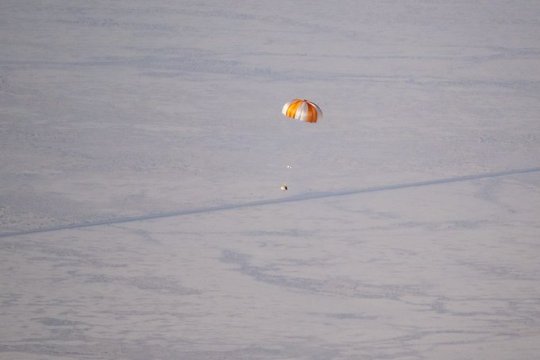
#NASA’s OSIRIS-REx mission#OSIRIS-REx Sample Return#NASA’s OSIRIS-REx spacecraft#asteroid bennu#nasa#nasa photos#nasa picture of the day#space#spaceship#spacecraft#its here
52 notes
·
View notes
Text
Curation team members at NASA’s Johnson Space Center in Houston have successfully removed the two fasteners from the sampler head that had prevented the remainder of OSIRIS-REx’s asteroid Bennu sample material from being accessed.
[...]
Curation processors paused disassembly of the TAGSAM head hardware in mid-October after they discovered that two of the 35 fasteners could not be removed with the tools approved for use inside the OSIRIS-REx glovebox.
In response, two new multi-part tools were designed and fabricated to support further disassembly of the TAGSAM head. These tools include newly custom-fabricated bits made from a specific grade of surgical, non-magnetic stainless steel; the hardest metal approved for use in the pristine curation gloveboxes.
“In addition to the design challenge of being limited to curation-approved materials to protect the scientific value of the asteroid sample, these new tools also needed to function within the tightly-confined space of the glovebox, limiting their height, weight, and potential arc movement,” said Dr. Nicole Lunning, OSIRIS-REx curator at Johnson. “The curation team showed impressive resilience and did incredible work to get these stubborn fasteners off the TAGSAM head so we can continue disassembly. We are overjoyed with the success.”
Our top specialists at NASA, developing the cutting-edge tools needed to open the most difficult jars
10 notes
·
View notes
Text

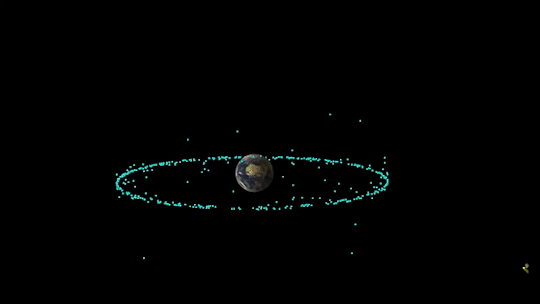
Fresh off its historic mission to collect samples from an asteroid in deep space, NASA's OSIRIS-REx spacecraft has its newest assignment: studying another asteroid during its close encounter with Earth.
OSIRIS-REx ended its seven-year, 4 billion-mile round-trip journey to collect samples from the space rock Bennu in September. But instead of shutting down the craft, the team proposed sending it on a second mission to the asteroid Apophis, expected to pass closer to Earth in 2029 than any other similarly-sized asteroid in recorded history.
They're renaming the spacecraft OSIRIS-APEX (Origins, Spectral Interpretation, Resource Identification, and Security – Apophis Explorer).
"The close approach is a great natural experiment," Dani Mendoza DellaGiustina, principal investigator for OSIRIS-APEX, said in a NASA press release last week. "We know that tidal forces and the accumulation of rubble pile material are foundational processes that could play a role in planet formation. They could inform how we got from debris in the early solar system to full-blown planets."
Apophis is a more than 1,000-foot-wide space rock named for an Egyptian deity and nicknamed the "God of Chaos."
The asteroid, first discovered in 2004, is expected to pass within 20,000 miles of Earth's surface — nearer than some satellites — on April 13, 2029.
_________________
I got super excited for a extinction level event for a moment there
22 notes
·
View notes
Text
NASAs Bennu Asteroid Sample Contains Carbon Water
Initial studies of the 4.5-billion-year-old asteroid Bennu sample collected in space and brought to Earth by NASA show evidence of water and high-carbon content, which together could indicate the building blocks of life on Earth may be found in the rock. NASA made the news Wednesday from its Johnson Space Center in Houston where leadership […]
from NASA https://ift.tt/C8seHhj
0 notes
Note
fun fact! nasa sent a (i forget the word i’m sorry) little robot dude (close enough i guess) to collect some samples from an astroid and it was really important to them. the mission was a success and the lil robot dude came back.
but there was a problem…
the door to the samples from the astroid got stuck. So rocket scientists struggled to open the door for like months.
Yess!!! I watched this live!!! OSIRIS-REx went to the Bennu asteroid! I think they got it open January 10th this year!
8 notes
·
View notes